As the holidays approach, you’ll probably start decking your halls and home. This annual to-do usually means putting up the Christmas tree. You might invest a lot of time and effort into finding the perfect location for the tree and picking out the best spots for each ornament, but your curious cat can undo all of that work in seconds if he decides to climb the tree.
We’ve all seen the videos that circulate each year of cats decimating Christmas trees, destroying ornaments, and potentially even hurting themselves in the process. Keeping the cat out of the Christmas tree can be a real challenge, but these tips will help both your tree and your kitty stay safe.
Put your tree in a secure room
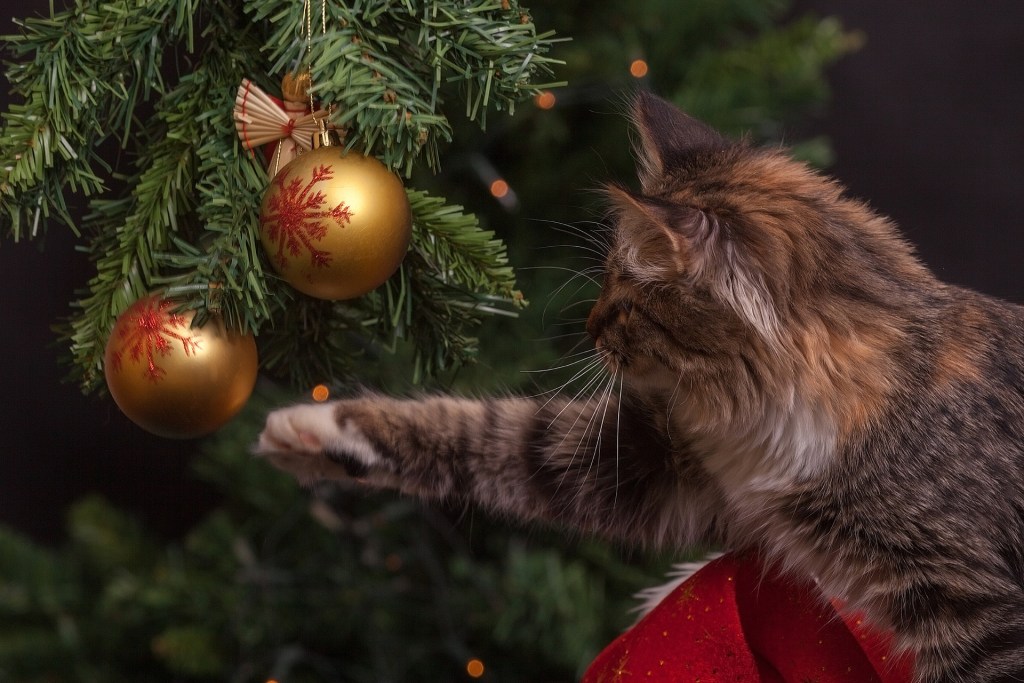
One of the easiest and most foolproof ways to keep your tree safe from your cat is to put it in a room that you can close off. If you have doors in your living room, a den, or an enclosed office, you might consider putting the tree in that room and leaving the doors closed. When the family’s home and you’re spending time in the room, your cat can come in and join you, but when it’s time for bed, remove your cat from the room and prevent her from going back in.
You can sometimes create this same effect using pet gates. You’ll likely need multiple gates to stack up in the doorway to prevent kitty from simply leaping over them. This method may or may not work, depending on how ambitious your cat is.
If protecting a full-size tree from your cat is difficult, consider getting a smaller tree that’s only a foot or two high. You’ll still be able to decorate the conifer for Christmas, but there won’t be much tree for your cat to climb. Plus if the tree does fall, it won’t endanger your cat. With a full-size tree, you’ll need to carefully plan how you can keep your cat safe
Secure your tree to protect your fir and furry friend
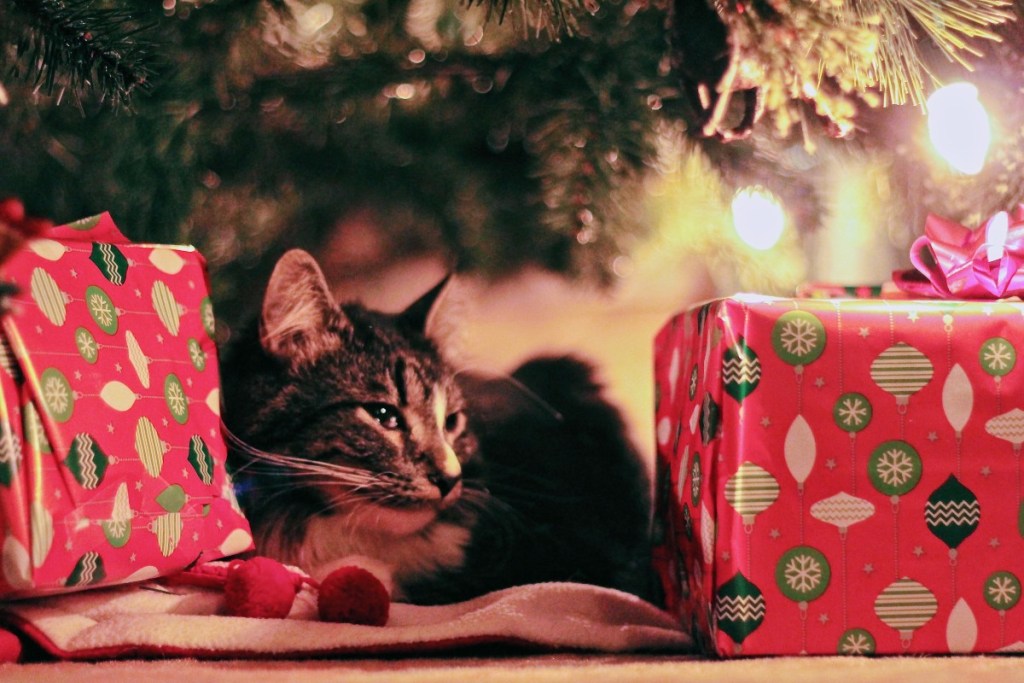
If you suspect your tree will need to withstand attacks from your cat, then take extra measures to secure it so it stays upright. Invest in a broad, heavy base that stabilizes the tree from the bottom, then create multiple anchor points to secure the tree to the wall and the ceiling.
Putting your tree in the corner of the room can make this easier, since you can attach it to both walls with wire. You may be able to insert heavy-duty screw eyes into the corners or edges of your windowsills, then attach the wire to those screw eyes. This can help conceal the anchors a bit, and it means you won’t have to create holes in your wall. Alternatively, position the tree next to a stairwell, so you can anchor it to the banister.
Carefully choose your ornaments
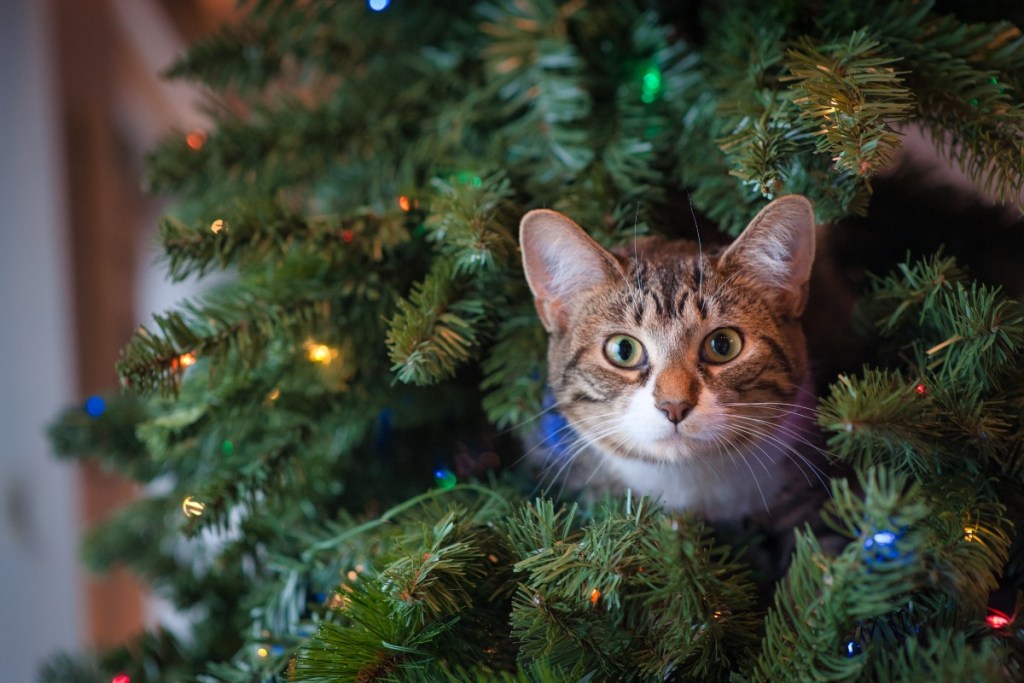
Choose ornaments that your playful cat won’t easily damage. Look for plastic bulbs, cloth ornaments, and other durable items. To make the tree less tempting, consider not hanging anything on the bottom foot or so of the tree, so there are fewer fun-looking things to catch your cat’s attention. Have a playful kitten? Then maybe it’s best that those fragile, treasured decorations stay packed away this year.
Make sure to avoid anything that could be toxic or harmful to your cat. Spray snow isn’t a good idea, and avoid tinsel, which can cause intestinal blockages if your feline swallows it. Sweep up pine needles frequently so your cat isn’t tempted to chew on them.
Always supervise your cat
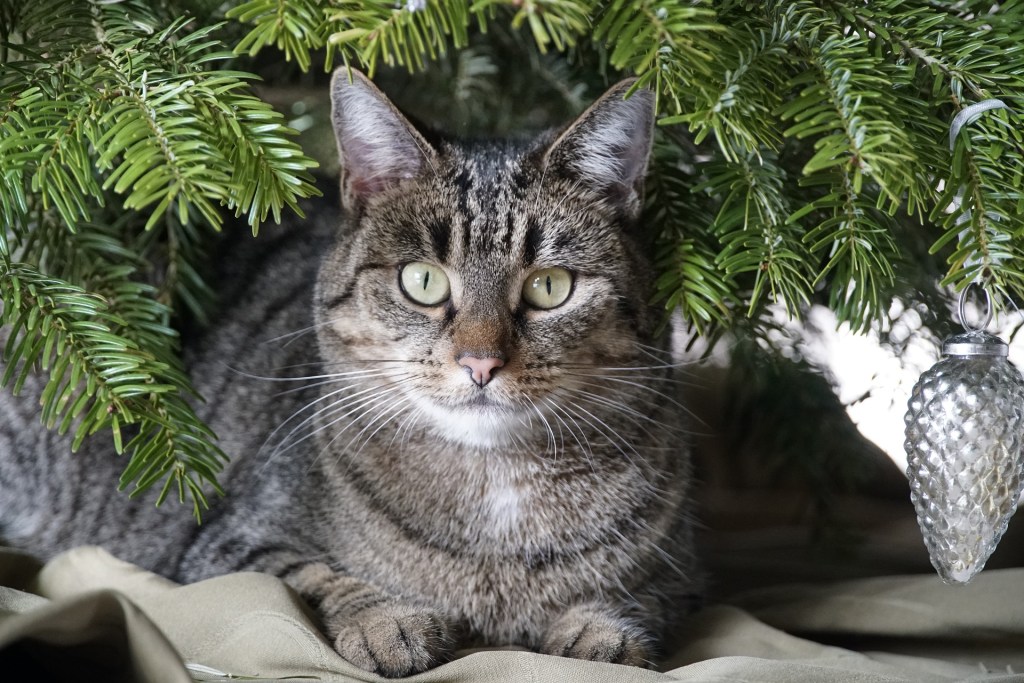
Even with plenty of planning, it’s still important to closely supervise your cat. There are all sorts of dangers that come with the holidays, including your tree, decorations, and the extra food that’s present during parties. Planning ahead and making sure your cat can’t get access to many of these tempting offenses is a good first step in helping to keep him safe, but it’s still important to be aware of what your cat is up to during the holidays.
>With some extra effort, you may be able to protect your Christmas tree from your pet so you can all enjoy it together without worrying about when it will come toppling over.
How to make a cat-friendly Christmas tree
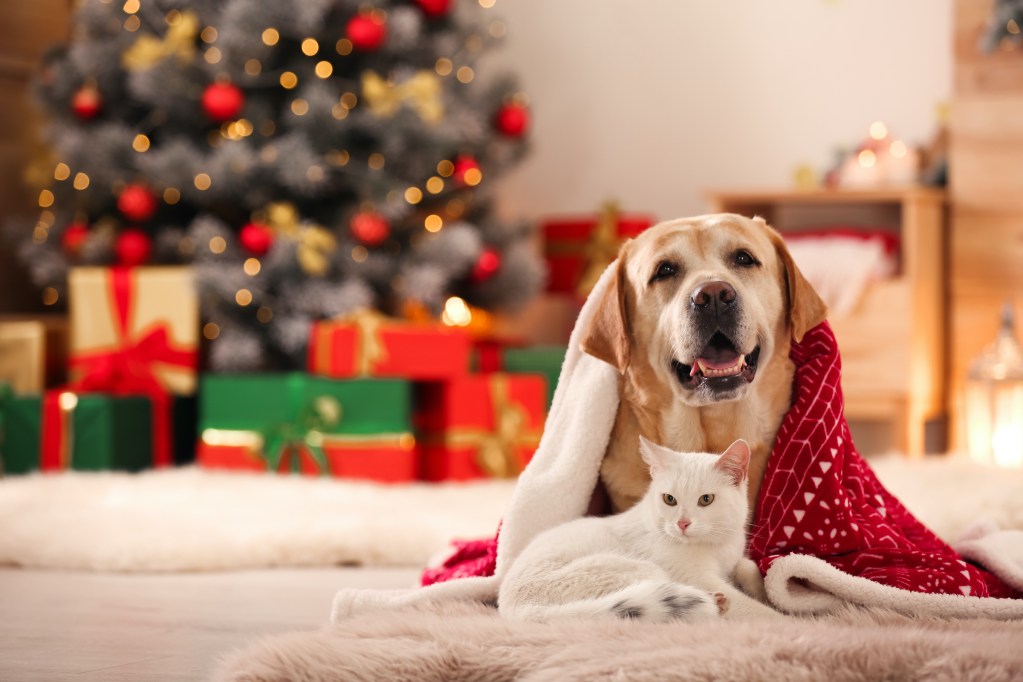
We’ve covered everything not to do, but there’s a lot you can think about to make your holidays pet safe. Consider swapping out ornaments for natural plants, like dried cherries or pine cones (provided your cat won’t try to eat these, too). Instead of fake snow, put up cotton balls or pillow stuffing to add a bit of white flare.
Always use plain water in your tree without any additives. Certain kitties might not be up for any of these accommodations. In that case, try out a paper tree that goes on the wall or a cardboard one with a stand. If you live in the right climate, you can also just decorate a tree outside (use only natural ornaments for this, though).
Of course, knowing your individual animal will enable you to find the best course of action. Adjust as needed to meet your cat’s needs! By following all these tips and sticking with only pet-friendly decorations, everyone in your household will enjoy the season from start to finish.



